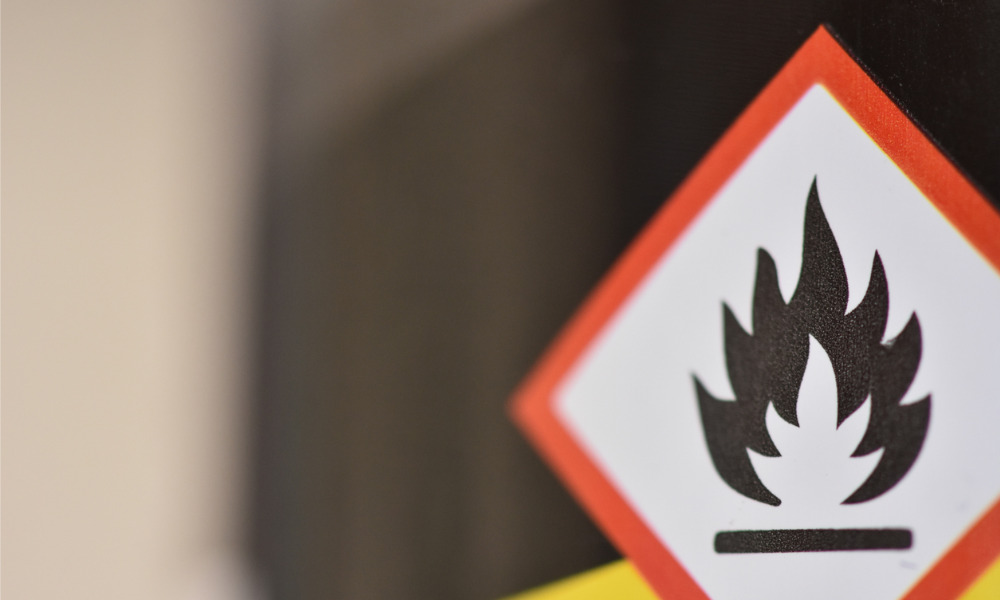Safety Data Sheets are your best source of information on hazardous material

Flammable hazardous materials can be commonly found in certain worksites, including construction sites, factories, laboratories and educational establishments. For this reason, employers must develop policies and procedures to protect workers and everyone else in the workplace.
According to the British Safety Industry Federation (BSIF), one area employers must focus on is the storage of these flammable materials.
“You must develop work procedures for the use and storage of flammable materials and ensure workers are trained in these procedures. Because of the potential fire hazard, you will also need to have additional procedures in place to deal with fires and spills,” said BSIF.
The group noted that many facilities require large volumes of flammable materials.
“At these sites, flammable materials may be stored in large containers - 200L drums or 1000L IBC’s (Intermediate Bulk Containers) are most common. One of the most effective control measures when working with bulk flammables is to remove them from the workplace and into a safer, external storage location,” said BSIF.
In particular, flammable liquids must be separated from site boundaries, occupied buildings, process areas, fixed ignition sources and incompatible materials. If this cannot be done, flammable materials must be stored in fire-rated construction units with fire-rated doors fitted with intumescent seals.
Storage units must also have legally compliant bunds to retain leaks and spills which are capable of withstanding fire; suitable ventilation to remove the possible accumulation of flammable vapours; temperature control to manage product stability; and explosion relief panels, as appropriate.
“In the event of an incident, the objective is to ensure that people can safely escape from the working area and in this context, the purpose of storing dangerous substances in the appropriate storage unit is to provide a physical barrier to delay the involvement of the stored liquids in a fire and provide sufficient time for people’s safe evacuation and the immediate implementation of emergency procedures,” said BSIF.
The group also noted that it’s important not to overlook any aspect associated with the safe handling of flammable liquids, such as static discharge during filling/decanting, combustion due to excessive heat build-up, potential ignition sources such as a spark from a tool or electrical component and pressure build-up in a container.
Maintaining Safety Data Sheets (SDS) is also essential for many aspects of hazardous materials, including toxicity, co-located storage, accidental release, firefighting measures and first aid. For this reason, SDS must be within arm’s reach for all staff at all times.
“SDS are your best source of information on hazardous materials especially for the compatibility of each material to another,” said BSIF.
BSIF also pointed to three tips to prevent fire incidents: (1) limit the amounts of flammable and combustible materials, (2) provide proper ventilation to ensure flammable vapours do not accumulate and (3) control ignition sources.





